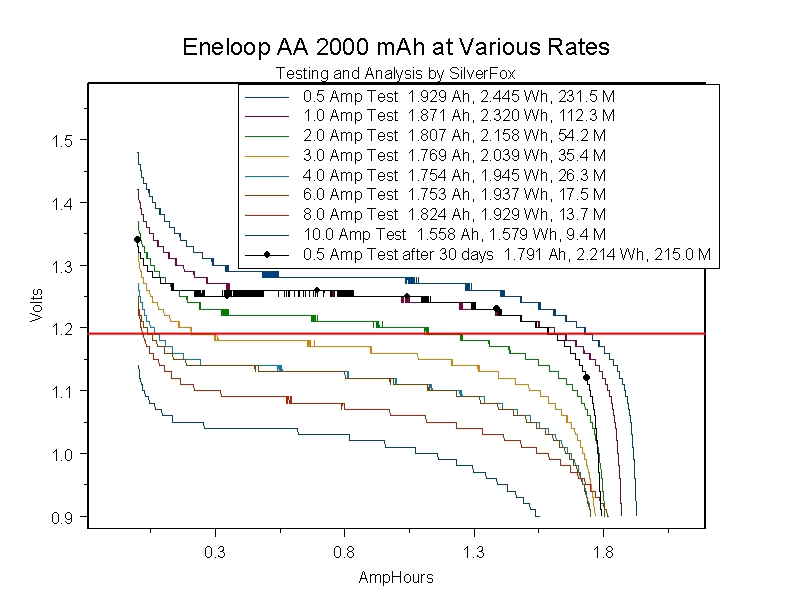Even though it is inconvenient - I'll persist with this set of KP-C - just to see how many shots I can squeeze out of them until final shut Off (ie: turning Off and On will not resuscitate).
Well impatience got the better of me.
I was using the dSLR today - for what I thought was non-demanding (ie: no flash and under normal bright conditions) and the camera shut-down on me in the middle of the session - so I won't persist further as it would be too just inconvenient - so have finally given up on this set of KP-C - final total shot count? just 347!!! - this is WAY lower than the 671 shots I managed to get from the KP-C set - when they were more recently charged (however, to be fair, this is still "repectable" - easily within the specs of the K100D for regular 2500mAh NiMH)
This is relatively "disappointing" for me - as the KP-C do not match the eneloops, after more than about 3 months -
However it is NOT actual loss of capacity from storage - but lower operating voltage under load - which is the very thing that gives the Pentax K100D dSLR its notorious reputation for being very battery fussy.
To prove this for myself I took two of the KP-C from the set and and used them on High (in general mode - not Turbo) in the same Fenix L1D-Q5 used in the crude runtime test previously in Post #27 - they both managed just over about ~55 mins until very low/no light - compared to the ~125 mins when the KP-C was freshly charged - this shows the used KP-C still had quite substantial charge left in them - may be as much as 44% left -
IF the K100D had been able to utilize the remaining capacity - that probably would have resulted in a "theoretical" shot count closer to 631! - which is in the ballpark of the previous set of KP-C (when more recently charged) and the eneloops.
I know this seems to be beating a dead horse - but I can finally prove (to myself at least) that eneloops do maintain a higher operating voltage under load and do show a practical advantage when used in voltage level sensitive devices (like the Pentax K100D dSLR) - for me the eneloops have to be the choice for use in this camera -
The Kodak Pre-Charged although do perform well, and managed to keep up with eneloops - will not do so after about 3 months storage - not that they lose capacity (they did not) but because they have lower operating voltage under load at that point......
ie: KP-C do not maintain their operating voltage under load as well as eneloops.
Last edited:









